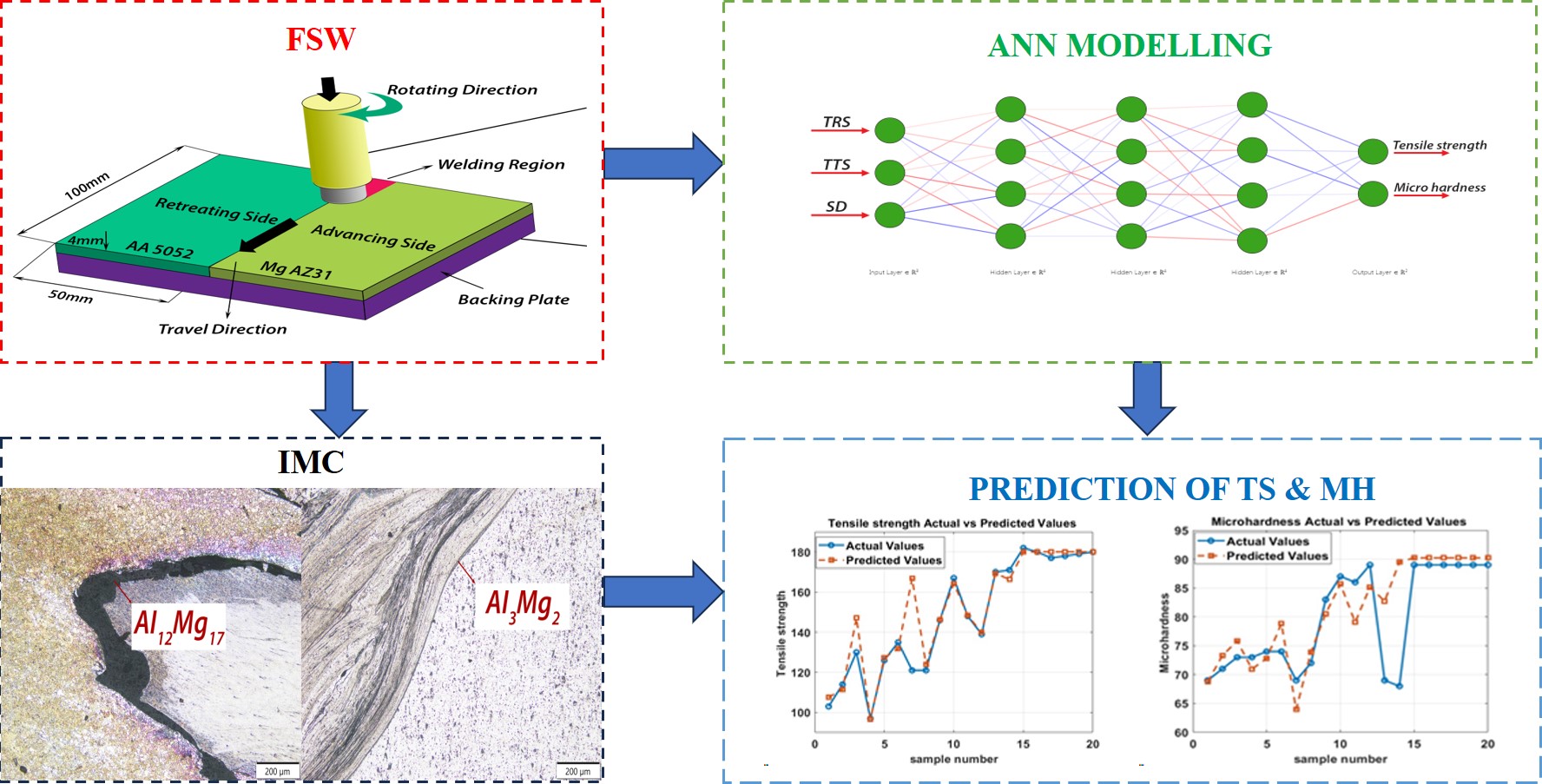Sun, Jan 12, 2025
[Archive]
Volume 21, Issue 2 (June 2024)
IJMSE 2024, 21(2): 1-12 |
Back to browse issues page
Download citation:
BibTeX | RIS | EndNote | Medlars | ProCite | Reference Manager | RefWorks
Send citation to:



BibTeX | RIS | EndNote | Medlars | ProCite | Reference Manager | RefWorks
Send citation to:
Ramasamy P. Experimental Inquiry and Machine Learning for Predictive Analysis of Friction Stir Welded AA5052 and AZ31B Dissimilar Joints. IJMSE 2024; 21 (2) :1-12
URL: http://ijmse.iust.ac.ir/article-1-3491-en.html
URL: http://ijmse.iust.ac.ir/article-1-3491-en.html
Abstract: (6426 Views)
The present investigation delves into the friction stir welding of AA5052 and AZ31B alloys, examining the effects of three distinct parameter configurations. A face-centered central composite design, structured to incorporate full replications for comprehensive and reliable analysis, was employed. A pivotal element of this study is implementing an advanced deep neural network (DNN) model. Characterized by its varied activation functions, structural parameters, and training algorithms, this DNN model was adeptly configured to precisely predict the tensile strength and microhardness of the welded joints. This comprehensive examination also included a quantitative assessment of the parameter effects on joint microstructure and mechanical properties. Flawless welds with exemplary surface characteristics were attained through a meticulously optimized set of parameters: a tool rotation speed set at 825 rpm, a tool traverse speed of 15 mm/min, and a shoulder diameter of 18 mm. During the welding process, the formation of intermetallic compounds, specifically Al12Mg17 and Al3Mg2, was observed. An exceptionally refined grain size of 2.23 µm was observed in the stir zone, contributing to the joint's enhanced tensile strength, measured at 180 MPa. The hardness of the specimen fabricated at the high rotational speed is more elevated due to the brittle intermetallic compounds. The better mechanical properties are related to the reduction and distribution of intermetallic compounds formed in the interface zone.
Type of Study: Research Paper |
Subject:
Mechanical properties
Send email to the article author
| Rights and permissions | |
 |
This work is licensed under a Creative Commons Attribution-NonCommercial 4.0 International License. |







